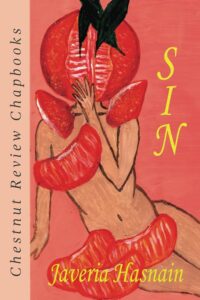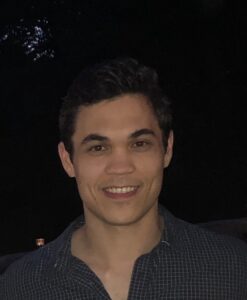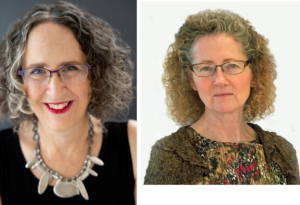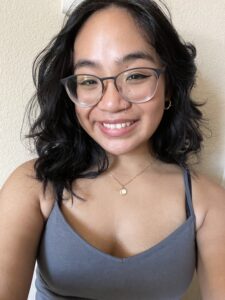On Teaching Young Writers: Getting Better, Not Being Good
by Jason Linden
August 11, 2016
Half a dozen years ago, the high school where I teach was given an arts magnet. We had meetings. There were thick packets that outlined programs. I flipped through: Visual art. Drama. Music. Journalism. Graphic Arts. I flipped through again. Nope. No creative writing.
And that’s normal. Creative writing has long been no more than a one-year or one-semester elective in high school. But the more I thought about it, the less sense it made. Music and art and journalism and drama all have long histories of extensive high school study. Why should creative writing be different? It has been said that our current age has a “crisis of empathy” and writers are nothing if not empathy peddlers. Teach someone to write and you might also teach him or her to see the world from different angles. That’s something we need more of and it’s a fantastic reason to start more in-depth creative writing study at the high school level.
So I got approval and I started a program. I wrote and revised the curriculum and recruited students. The time has come for me to try my hand at other things and so the program is being transitioned to another teacher. Still, in the last six years, I’ve learned a lot about the care and feeding of young writers, and I’ve seen how much they get from it beyond learning how to form a nice sentence. For all of you teaching or thinking of teaching creative writing, here’s what worked best for me.
Year 1 – The New Kids
Jason Linden
On the first day of every intro writing class, I stand up in front of my students and tell them I don’t expect them to be good. This is big because all 31 of them have already been told how good they are. Every teenage writer who has ever shown anything to anyone has been told their writing is great. Their friends and parents and great aunts all think they are the best. So when I say to them, “You aren’t supposed to be good yet” – the room can get quiet for a minute.
I care about their feelings, but I don’t want to be one more person who tells them what they want to hear. I can’t teach students if I can’t be honest with them. And the honest truth is that the odds of a fourteen year old being an unqualified good writer are vanishingly small.
I talk to them about looking back at my own writing from high school and college and how bad it was. I tell them about the writing teachers who took me seriously and handed back papers covered in ink. I talk about the time in college when I tried something and it didn’t work and the professor handed back my story with a single note: “Maybe not.” If I’m lucky, I have one of my advanced students as an aide, and I look over my shoulder at them, “You ever look at your writing from freshman year?” And they cringe and roll their eyes.
And then I laugh about it. I laugh about myself and my own bad writing. James Hynes said that writers are achingly self-conscious people. Let me tell you, this is even truer when they’re fourteen. So I show them that I can laugh about my mistakes. I let them know I’m human, and I let them know I’m going to take them seriously. Most of them have never been taken seriously as writers.
But I don’t let it go on too long like this. There has to be some sugar to help the medicine. I stop and say, “But I can promise you, because you care enough to be in this class, that you are all ahead of the game for your age.” Is this true? Yeah. Close enough at least. And it sets up the push and pull I have to have.
Young writers are hungry to be told they are good enough and they are terrified of being told they aren’t. What they need is to be told that they’ve been good enough, but need to keep working so they don’t fall off the pace. And this is where we start. Yesterday was good. What are you going to do tomorrow?
Year 2 – Learning to Play Nice
Anyone who has dealt with teenagers can tell you there’s a big difference between freshmen and sophomores. At the beginning of the second year, the students in the room have put up with me and decided to come back. They know me and – even more importantly – they know each other. They have accepted that they have things to learn and that my advice isn’t totally worthless.
If things go right, they will spend the year learning to trust each other. I find it’s best to treat their bonding as a foregone conclusion. I tell them that my second-year classes usually end up pretty close. I have to tell them this because they are about to learn that the structure of the class this year will be radically different. There are five or six weeks of lessons spread throughout the year, otherwise, we write and, much to their initial horror, have whole-class workshops.
They have a couple of small group workshops during the first year, but mostly, I’m too busy trying to get them to think about their own writing. Purpose. Word choice. Character development. Metaphor. But now the concepts have been introduced and they need to start getting feedback from someone other than their boring old teacher.
Anyone who’s gone through workshops knows how painful they can be. I can tell you that this only magnifies itself when you are the teacher. I struggled for several years to figure out how to teach them what to look for and then, a few years ago, I was lucky enough to talk to Chang-rae Lee for a couple of minutes at a reading.
I asked him about his teaching and he told me about doing close-reads of very, very short stories (think “Birthday Party” by Katharine Brush), and I realized that this was what my students needed. Good writing involves the careful assembly of so many moving parts that it can overwhelm an inexperienced writer when they try to analyze it. Using very short pieces and going through them line-by-line allows them to see the purpose of everything that happens in good writing. I’m not claiming this method produces perfect workshop. But it helps a lot.
Over the course of this year, they struggle. It is hard to have others critique your writing – something that will happen to them six times during the course – and at some point, someone always gets mean, and I have to give them a talking to (which works only because they trust me). Despite occasional meanness, the class does usually end up getting along. Teenagers forget things faster than you and I. Plus, when you’re forced to interact with someone, it’s awfully hard to keep being mean if you want to have a decent year.
Every year, in March or April, the lights start to go on for the second-year class. What has happened is that they’ve had enough time to see their peers make mistakes. I do sidework as both a writer and an editor and I can tell you there is a reason that otherwise good editors shouldn’t be trusted to edit their own work. It is much easier to see the shortcomings of someone else’s writing and once you see those short comings clearly, you start to notice – finally – when they crop up in your own work and then you get better. It’s the person doing the critiquing who learns the most. Not the person being critiqued.
Year 3 – Find a Voice and Produce
A few years ago, when I asked a third-year class what they felt like they needed the most help with, I got an interesting answer. They wanted to know how to tell when a piece of writing was really good. This is the most daunting thing I’ve ever been asked to teach, and I had to think hard to figure out how to approach it. It also hit at a pet annoyance of mine. It’s not uncommon for me to have to step in when a kid does turn in something of quality and talk about why it’s good before the rest of the class nitpicks it to death (teenagers can be overzealous, after all). What I eventually came up with is now the first lesson I teach in year three. This is how it goes:
I pull eight opening passages from novels. I try to vary the styles and subject matter as much as possible. I make sure they come from books my students haven’t read and I remove all identifying information. I then put the kids in groups and ask them to rank the paragraphs based on the quality of the writing. There is, of course, a catch. I have made sure to put in four passages that are unimpeachably wonderful and four that are so terrible they should turn the stomach of any dedicated writer.
The first time I did this, I didn’t know what I would get, but now I know it always comes out the same. When we figure out an aggregate ranking, it lines up almost perfectly. Sometimes they’ll rank a bad paragraph as number four and good paragraph as number five, but that’s it. This comes as a relief to all of us. They know what good writing is – they just needed to be shown that they did.
After the exercise, we talk about each selection. Individual students will have been fooled by some of them, often because of their own weaknesses, and this makes for a useful discussion.
Once we’ve taken the time to define good writing, we spend the rest of the year trying to do it. A lot. This is where I start introducing assignments I was given in college. Requiring them to write in the objective point of view. Limiting description to number, size, and color. And the assignment that I credit with turning me into a decent writer – choosing a story to mimic. I see more improvement after forcing them to mimic a story of their choosing than I do after any other assignment I give. It’s like magic, but it would be a disaster if I gave it to them sooner. They have to be ready.
Their final assignment lasts an entire semester. They write forty pages (one story or several stories) or forty poems depending on their preferred genre. They only requirement is that all of the writing has to be connected in some way. It is torture for all of us, but it’s necesary. All writers, at some point, have to learn what it is to produce more than four or five pages at a time. They have to think about pacing and thematic connections and they have to revise in earnest without throwing everything out.
High school students love to complain about writing assignments that go longer than a page or two. By the time I finish with them, none of my third year students complain (this comes in handy when many of them inevitably end up in my AP literature class).
Year 4 – Figure It Out on Your Own
There comes a point for every young writer when they have to decide if they want to keep doing it. Teachers, after all, will not always be standing over their shoulders, pushing them to do more. And it’s not as though there are likely to be piles of money and recognition at the end of the road to serve as motivation. Writers keep writing because they want to.
When my fourth year students come in, I give them an assignment to write a one-page proposal outlining what they view as their areas of weakness and explaining what they want to do to help themselves grow in these areas. We conference about it and agree on a reasonable production schedule and then they write. This is the real test. I rarely remind them. I don’t badger them. When they turn things in, I read what they’ve given me and we talk about it.
They are seniors and distracted by being seniors and often they don’t produce much writing. For some of them, it’s a lull after three years of intense learning. For others, it’s the end of the road. They’ve gotten where they were going with writing. And that’s okay. The point was never to turn them into career-writers. The point was to teach them about the value of the written word, to show them how to look at themselves and others with an honest, critical, and empathetic eye. These are the things I hope my students take away from my classes. Write. Question. Be kind. Try hard to understand. And when you see something good – when you are lucky enough to write something good – smile for a moment and then go looking to see what else you can find.
—–
ABOUT THE AUTHOR
Jason Linden teaches English and creative writing in Louisville, KY where he lives with his two children. His debut novel, <em>When the Sparrow Sings,</em> is kicking around out there still. You can find him on Twitter @jasonlinden or visit his website jasonlinden.com






